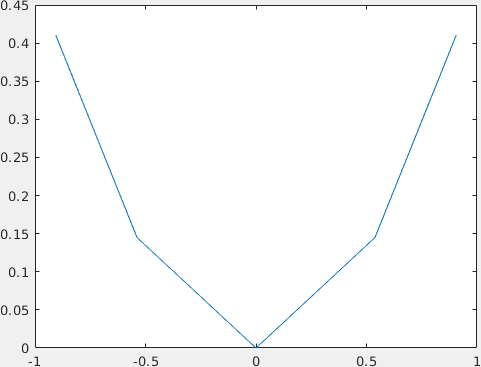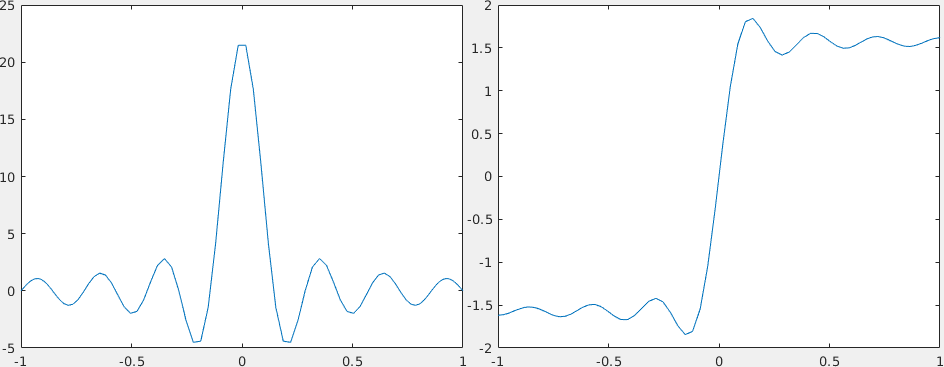In the standard literature topics like numerical differentiation and numerical integration are usually discussed in detail. However, numerical integration is not the same as calculating the (true) antiderivative numerically.
What is the reason nobody is discussing this topic? Is there simply no application for this?
Note that the antiderivative is unique up to a constant.
To expand:
The function $f(x)=x$ is given at five discrete points (Legendre-Gauss)
$x_i= \begin{pmatrix} -0.906 & -0.538 & 0.000 & 0.538 & 0.906 \end{pmatrix}^\text{T} $
with function values
$f_{i}= \begin{pmatrix} -0.906 & -0.538 & 0.000 & 0.538 & 0.906 \end{pmatrix}^\text{T} $
and the related quadrature weights
$\omega_{j}= \begin{pmatrix} 0.237& 0.479& 0.569& 0.479& 0.237 \end{pmatrix} $
and the related derivative matrix at these points
$D_{ij}=\begin{pmatrix} -5.067&7.702&-4.044&1.960&-0.552\\ -0.960&-0.758&2.403&-0.929&0.244\\ 0.301&-1.435&-0.000&1.435&-0.301\\ -0.244&0.929&-2.403&0.758&0.960\\ 0.552&-1.960&4.044&-7.702&5.067\\ \end{pmatrix}$
and the related antiderivative matrix at these points
$A_{ij}=\begin{pmatrix} -0.109&-0.559&-0.262&0.030&-0.006\\ 0.029&-0.281&-0.334&0.062&-0.015\\ 0.000&0.000&0.000&0.000&0.000\\ 0.015&-0.062&0.334&0.281&-0.029\\ 0.006&-0.030&0.262&0.559&0.109\\ \end{pmatrix}$.
Note that
$A_{ij} \ne D_{ij}^{-1}$.
Now it is possible to define following numerical operations:
Numerical integration (quadrature)
$I=\omega_{j} f_i = 0.000$
Numerical differentiation
$\partial f_i=D_{ij} f_i = \begin{pmatrix} 1.000 & 1.000 & 1.000 & 1.000 & 1.000 \end{pmatrix}^\text{T} $
Numerical antidifferentiation
$F_i=A_{ij} f_i = \begin{pmatrix} 0.411 & 0.145& 0.000& 0.145& 0.411 \end{pmatrix}^\text{T} $
Note that applying the Fundamental theorem of calculus to this function
$ I = F(-1) - F(1)=0.000 $
would give you a similar result to Gauss quadrature.




